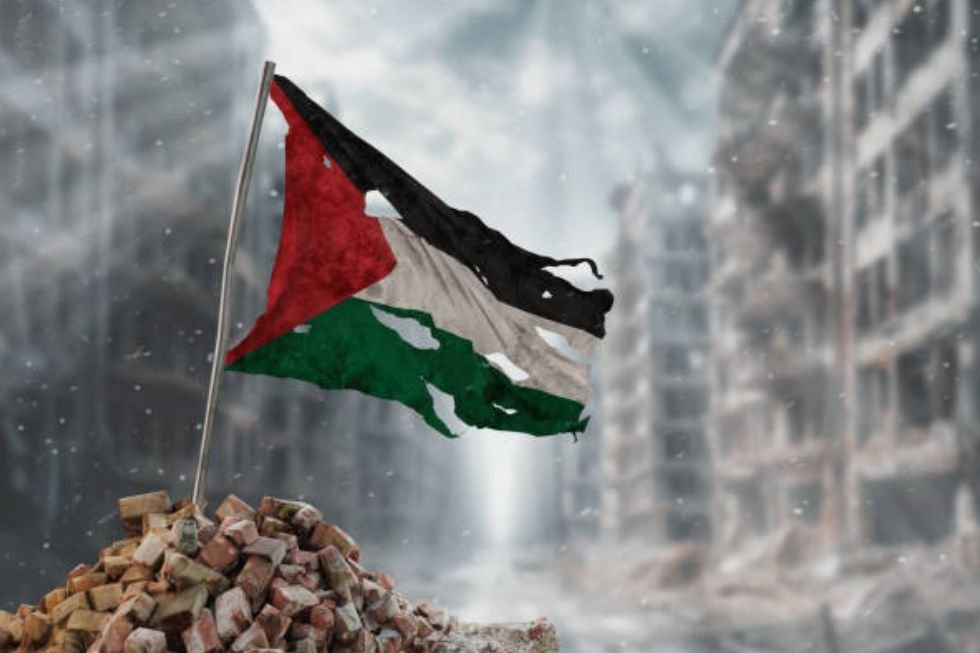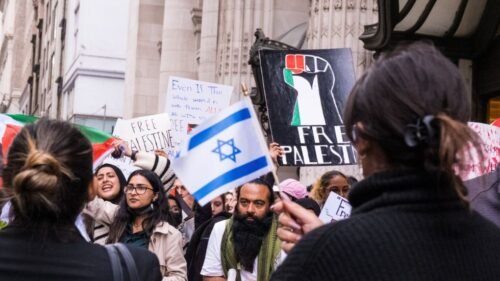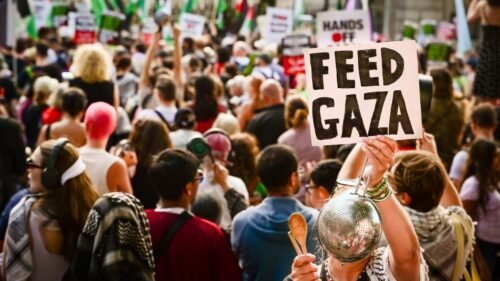In recent days, grainy clips from Gaza have captured a striking figure: a resistance fighter cloaked not in uniform, but in a dust-covered blanket. With his head and shoulders swallowed in its folds, he slips across the rubble like a ghost, vanishing into smoke. To the casual viewer, he could be mistaken for a weary man warding off the chill.
What looks fragile is anything but. The blanket is no emblem of weakness — it’s a tactic. A simple, low-tech ruse that unsettles high-tech warfare. The tactic, used by Gazans to circumvent high-tech Israeli surveillance technology, signals adaptability and resourcefulness.
The human silhouette problem
The Israeli government utilizes high-tech systems to track, surveil and target Palestinians. Drones armed with automated cameras, thermal sensors and AI-driven systems with “serious flaws” such as Lavender are trained with facial recognition software to detect and collect data on Palestinians.
But a coarse blanket can scramble these systems. By masking the body’s contours, a fighter dissolves into Gaza’s ruins, reduced in the machine’s eye to rubble and shadow. What looks like improvisation is actually a countersurveillance tactical adaptation — a low-tech form of visual jamming that exposes the blind spots of Israel’s high-tech surveillance technology.
Outsmarting the thermal eye
Contemporary camouflage is not just about blending into rubble — it’s about hiding from the thermal gaze. Infrared cameras render the human body as a glowing beacon, impossible to miss. But a heavy blanket changes the equation. As a thermal diffuser, wool or fleece muffles heat, blurring the figure into a vague smear on the screen.
What global militaries spend millions achieving with “thermal stealth cloaks” and infrared-blocking fabrics, Gaza’s fighters improvise with household cloth — transforming a simple cover against the cold into a low-tech shield against the most advanced sensors of modern war.
Disappearing into the ruins
Color and texture are as critical as camouflage. Gaza is now a landscape of gray dust, shattered concrete and drifting smoke. A fighter in sharp colors or a glint of metal would stand out instantly. But a dusty blanket blends in perfectly with the palette of ruin.
Like partisans in World War II forests or Vietcong guerrillas in Vietnam’s jungles, Gazan fighters do not just hide — they become part of the environment. The folds of fabric mirror the collapsed stone. The drab hues melt into the haze. They are no longer a separate figure but an extension of the ruin around them. The environment itself becomes their uniform.
The symbolism of simplicity
The power of the blanket goes beyond technique — it is a symbol. A Gazan fighter draped in a worn household cloth blurs the line between domestic life and battlefield. No polished armor, no gleaming gear — only the remnants of domestic life forced to act as an instrument of survival.
To distant observers, the blanket becomes resistance incarnate: ordinary fabric transformed into a defense mechanism through sheer ingenuity. Against drones, sensors and high-tech war machines, it signals an uneven struggle where unyielding adaptability outweighs firepower.
For Israeli security, it is unsettling. For a besieged and starving Gazan community, it is resilience made tangible — proof that even the most ordinary objects, in determined hands, can resist annihilation.
The broader lesson
The blanket is more than a battlefield tactic — it is a metaphor for Gaza itself: a place where survival demands fortitude, where domestic objects double as weapons and the ordinary becomes extraordinary.
A fighter in a blanket and tattered slippers challenges assumptions about modern war, proving that ingenuity, born of desperation, can bend the logic of drones and AI. Every unseen movement beneath the unblinking eyes of high-tech machinery is both a tactical and symbolic victory — a testament that even the simplest cloth can challenge the mightiest forces responsible for the genocide of Gazan civilians.
[Elliott Frey edited this piece]
The views expressed in this article are the author’s own and do not necessarily reflect Fair Observer’s editorial policy.
Support Fair Observer
We rely on your support for our independence, diversity and quality.
For more than 10 years, Fair Observer has been free, fair and independent. No billionaire owns us, no advertisers control us. We are a reader-supported nonprofit. Unlike many other publications, we keep our content free for readers regardless of where they live or whether they can afford to pay. We have no paywalls and no ads.
In the post-truth era of fake news, echo chambers and filter bubbles, we publish a plurality of perspectives from around the world. Anyone can publish with us, but everyone goes through a rigorous editorial process. So, you get fact-checked, well-reasoned content instead of noise.
We publish 3,000+ voices from 90+ countries. We also conduct education and training programs
on subjects ranging from digital media and journalism to writing and critical thinking. This
doesn’t come cheap. Servers, editors, trainers and web developers cost
money.
Please consider supporting us on a regular basis as a recurring donor or a
sustaining member.
Will you support FO’s journalism?
We rely on your support for our independence, diversity and quality.











Comment